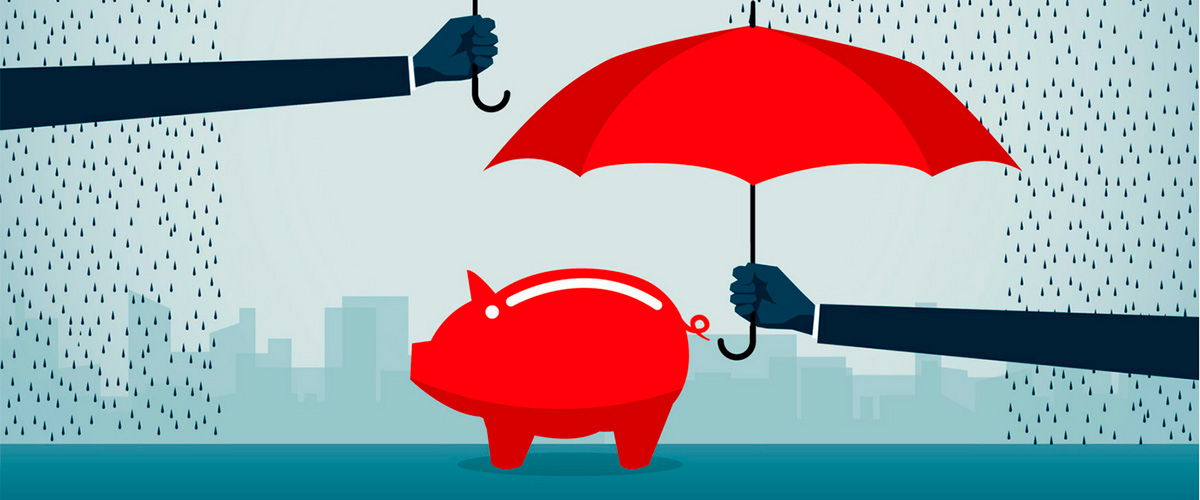Creating a financial safety net for unexpected life events gives you peace of mind and financial stability. Start by setting aside three to six months’ worth of living expenses in an emergency fund. Calculate this by multiplying your monthly spending by three to six; for instance, if you spend $4,000 monthly, aim for $12,000 to $24,000 in savings. Use a high-yield savings account to keep this fund easily accessible while earning some interest.
Next, secure key insurance policies, including health, life, disability, homeowners, and renters insurance. These safeguard against significant losses that can deplete your savings quickly. Additionally, balance your budget by adhering to the 50/30/20 rule: allocate 50% of your income to needs, 30% to wants, and 20% to savings and debt repayment. This approach helps set clear financial goals, reduce frivolous spending, and build your emergency fund effectively.
Lastly, maintain and grow your financial safety net by automating your savings and reviewing your budget regularly. Stay disciplined by tracking expenses and avoiding unnecessary withdrawals from your emergency fund. Diversify income sources and manage high-interest debts wisely to reduce financial strain. If you have any questions or need further advice, reaching out to a financial advisor, like the one our company represents, can provide personalized guidance tailored to your situation.
What Is A Financial Safety Net And Why Is It Important?
A financial safety net is a combination of savings and insurance that protects you from unexpected expenses and financial setbacks. It typically includes an emergency fund, which is money set aside in an easily accessible savings account for unforeseen events like job loss, medical bills, or urgent repairs.
Having a financial safety net is crucial because it prevents you from spiraling into debt or facing financial ruin during emergencies. It provides peace of mind, ensuring you can cover basic needs without resorting to high-interest loans or credit cards. This stability allows you to focus on long-term financial goals without constant worry about potential disruptions.
You should take these steps to build a financial safety net:
- Emergency Fund: Save enough to cover three to six months of living expenses.
- Insurance: Get life, health, and property insurance to protect against larger, unmanageable expenses.
- Debt Management: Pay off high-interest debt to simplify saving.
- Flexible Savings: Keep funds in an accessible, interest-earning account.
Finally, by following these steps, you’ll create a buffer that keeps you secure, allowing you to handle life’s unpredictabilities without major financial setbacks.
How Do I Start Building A Financial Safety Net For My Family?
To start building a financial safety net for your family, you should follow these essential steps:
- Evaluate Your Financial Situation: Assess your income, expenses, assets, and debts. You need to understand where your money goes each month.
- Set Clear Goals: Define what you want to achieve financially, such as covering six months of living expenses, paying off debt, or saving for retirement. Prioritize these goals to guide your spending and saving decisions.
- Create a Budget: Break down your income and expenses, and allocate a specific amount to savings each month using the “pay yourself first” method. Look for areas where you can reduce non-essential spending.
- Build an Emergency Fund: Aim to save three to six months’ worth of living expenses, and place this fund in a high-yield savings account for easy access and better interest. Automate regular transfers to your emergency fund to stay consistent.
- Ensure Adequate Insurance: Get health, life, and disability insurance to protect against unforeseen events, as this coverage can prevent financial devastation during emergencies.
- Leverage Employer Benefits: Take advantage of benefits like 401(k) matches, Health Savings Accounts (HSAs), and Flexible Spending Accounts (FSAs). These benefits can enhance your financial safety net effectively.
- Automate Your Savings: Set up automatic transfers from your paycheck to savings and investment accounts to ensure you save consistently without having to think about it.
In closing, by assessing your finances, setting goals, budgeting, building an emergency fund, getting insurance, leveraging employer benefits, and automating savings, you can secure your family’s financial well-being and confidently navigate economic challenges.

What Types Of Accounts And Policies Should I Include In My Financial Safety Net?
To build a solid financial safety net, you should include several types of accounts and policies:
- Emergency Fund: Start with an emergency fund. This is essential for immediate access to cash during unexpected events like job loss, car repairs, or medical emergencies. Aim to save three to six months’ worth of living expenses in a liquid savings account.
- Insurance Policies: Consider key insurance policies for protection against significant losses. You should have:
- Health Insurance to cover medical expenses.
- Life Insurance to ensure financial security for your dependents.
- Disability Insurance to protect your income if you can’t work due to illness or injury.
- Homeowners or Renters Insurance to cover damage to your home or personal property.
- Short-Term Savings Account: Establish a short-term savings account for smaller, planned expenses or minor repairs without touching your emergency fund.
- Long-Term Savings Accounts: For long-term financial goals, establish long-term savings accounts like 401(k)s or IRAs for retirement savings. High-interest savings accounts or money market accounts are great for higher returns, helping your emergency fund grow faster.
- Big Purchase Fund: Set up a big purchase fund for major expenses like home repairs or a down payment on a new house.
Overall, having an emergency fund, insurance policies, short-term savings, long-term savings, high-interest accounts, and a big purchase fund ensures you’re prepared for financial uncertainties and can maintain your stability during tough times.
How Much Should I Save In My Emergency Fund?
You should save enough in your emergency fund to cover 3 to 6 months’ worth of living expenses. Cover costs like rent or mortgage, utilities, groceries, and transportation. If you have a stable and predictable income, you might find 3 months’ worth sufficient. However, if your income fluctuates, you’re self-employed, or you have multiple dependents, consider aiming for 6 months’ worth or even more.
To set your savings goal, begin by calculating your essential monthly expenses. Multiply this number by the number of months you want your fund to cover. For example, if your monthly expenses are $2,000, you should aim to save between $6,000 and $12,000.
If you’re currently paying off debt, start with a smaller emergency fund of around $1,000 for immediate, unexpected expenses. After paying off your debt, you can build up your emergency fund to the full 3 to 6 months’ worth of expenses.
Make sure to keep your emergency savings accessible, either in cash or a high-yield savings account, so you can easily cover spending shocks. Remember, this fund is your financial cushion for unexpected events, and you should replenish it after use.
Finally, aim for 3 to 6 months’ worth of essential expenses in your emergency fund, starting with $1,000 if you’re paying off debt, and keep these savings easily accessible for peace of mind.
What Steps Can I Take To Maintain And Grow My Financial Safety Net Over Time?
To maintain and grow your financial safety net over time, start by setting clear financial goals. You should aim to save at least three to six months’ worth of living expenses in an emergency fund. Open a high-yield savings account to let your money benefit from compound interest. Stick to the 50/30/20 rule: allocate 50% of your income for needs, 30% for wants, and 20% for savings and debt repayment.
Reduce frivolous spending by cutting back on non-essential expenses and transfer any extra money to your emergency fund. Take advantage of any unexpected windfalls, like tax refunds or bonuses, to boost your savings. Gradually pay down outstanding debt to reduce financial stress and free up more money for saving.
If you have an irregular income, such as from gig work, aim to build a larger buffer by saving three to six months of living expenses in addition to your safety net. Maintain long-term stability by regularly reassessing and adjusting your budget to ensure you do not spend more than you earn. Investing in yourself through education or skills training can also increase your earning potential, providing more resources to grow your financial safety net.
Make sure to keep a portion of your savings easily accessible in a savings or money market account for emergencies.
To sum up, consistently save a portion of your income, smartly manage your expenses, and invest in your future to maintain and grow your financial safety net over time.



